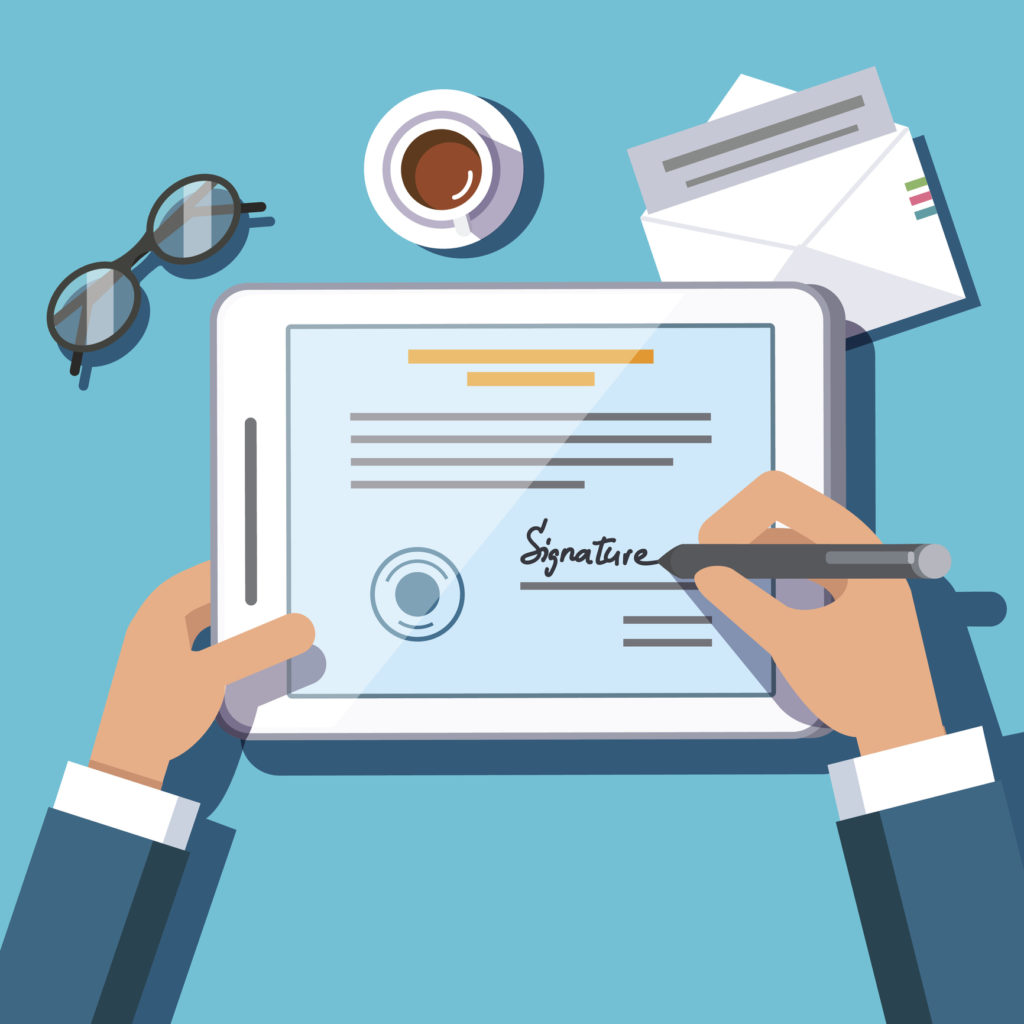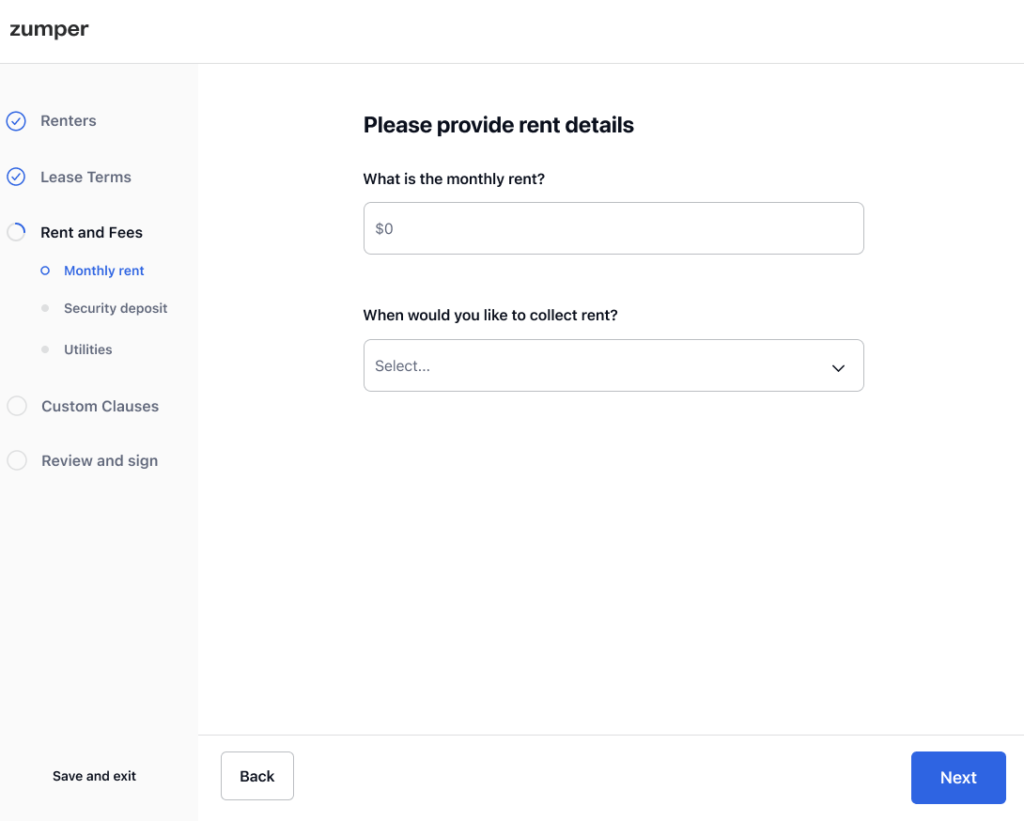
E-signatures, electronic signatures used on electronic forms, are safer than so-called “wet signatures,” a signature where you write your name on a piece of paper using ink. Don’t believe e-signatures are safer? They are, and here’s why.
A little history
Signing documents is a tradition as old as time—well, at least 1,000 years old. Fast-forward to when checks came along. Banks devoted whole rooms full of people who did nothing all day but verify that the signature on the check matched the signature the bank had on file—not exactly a foolproof method; even the professionals whose job it was to spot a forgery could be tricked.
Today when people wet sign for something, the signature often resembles a line or maybe a line with a squiggle, certainly nothing that can be verified the old-fashioned way. And that’s one reason e-signatures are safer than wet signatures: e-signatures can be verified.
What is a wet signature?
The term “wet” signature comes from a different era, a time when people signed documents by dipping a pen into an ink bottle. The ink was wet, and the signature, usually a cursive handwritten one (or even an “X”), needed to dry.
What is an e-signature?
An electronic signature, also called a digital signature, uses a uniquely identifiable, encoded mark. It has security features to ensure the signatory is really you and that your signature will not be modified after you sign it.
An e-signature happens when you type your name onto an electronic form, which is simply a computerized version of a paper form. Anything you can sign using a paper form can be computerized: a tax form, a job application … or a rental lease. And when that paper form is computerized, you sign using an e-signature. In 2000, Congress enacted a law called the Electronic Signatures in Global and National Commerce Act (E-SIGN), which made e-signatures legally binding.
5 benefits of e-signatures
There are several benefits regarding signing documents using an e-signature.
1. It’s convenient
The most obvious benefit of an e-signature is probably convenience. You can sign a document using an e-signature anywhere you like, as long as you have your device, like your laptop or smartphone, with you. You typically would simply open the link to the document and then just click a button to sign. You no longer need to physically go somewhere and meet with someone to sign papers. And you no longer need to print, sign, scan, and email a document after you sign it, a better option than physically meeting with someone, but cumbersome all the same.
2. Documents are easy to retrieve
It’s easy to get a copy of what you signed electronically. No more sorting through a file cabinet, taking up precious time, only to discover you can’t find the paper you need. When you sign a document with an e-signature, you simply retrieve it from where you saved it on your device. Or to retrieve the document you want, you can click on an email that usually accompanies any documents you e-sign. Once you access the document, you can view it or download it if you like.
3. It’s environmentally friendly
No paper is involved when you e-sign an e-document, which is probably good for the environment. And you don’t need to dedicate physical space to store all the paperwork that generates when paper with wet signatures are used. Everything is done digitally when you e-sign, so you don’t need to be concerned about paper or storage space.
4. It’s fast
Businesses (and landlords) don’t need to wait for signatures anymore. Wet signing a physical document requires a lot of time-consuming steps: packaging and mailing out paperwork; waiting for the recipient to receive that paperwork, wet sign it, and then repackage the paperwork as the business (or you) waits for it to come back. That process could take weeks, as opposed to practically instantaneous results when the parties e-sign an e-document.
5. It leads to an improved customer (or tenant) experience
By using an e-lease that requires an e-signature, for example, landlords can send to the tenants a link to the lease via text message or email. The tenant then has the leisure of reading through the lease at home (or wherever they are) before signing it, without the landlord or property manager watching them, as what typically happens when a paper lease and in-person signature are involved. In those cases, tenants would often just sign the lease without reading it because they felt rushed or uncomfortable. That does not happen with an e-document. Tenants still might not read the lease, but only because it might seem boring. But it’s important that tenants read their lease because it’s a binding contract.
4 reasons e-signatures are safer
E-signatures are safer and more secure in several respects.
1. Errors are eliminated
Signing mistakes can happen with any kind of document. But with paper documents, errors can go unnoticed until much later after the signing event, and that could invalidate the entire document, at which point everything would need to start over. But with an e-document, you won’t be able to proceed unless and until everything is signed properly and in the right places.
2. E-signatures are secure
E-signatures are more secure, and therefore safer, than wet signatures. They contain traceable information on the person who is signing the document. There is a record of when and where the document was signed, known as an audit trail, which includes the user’s IP address and a timestamp.
3. Forgeries are eliminated
Wet signatures can easily be forged. Remember, you have people trying to compare the wet signature with a signature on record, and it’s often difficult or even impossible for a person to be able to detect any differences, making forgeries commonplace with wet signatures. But with an e-signature, there are layers of security and built-in authentication methods to ensure the signature is legitimate and is from the person who is supposed to be signing the document.
4. There’s no tampering
People can tamper with and change paper documents. They can add things and remove pages, for example. But if someone tries to modify an e-document, there will be a record of any type of modification.
The bottom line
Most businesses are switching to having customers e-sign an e-document instead of relying on the old pen and paper way. The landlord business is no different. Digital leases benefit both the landlord and the tenant, as both parties have easy access to the lease, a lease that both parties have securely e-signed.
The Zumper Digital leasing product
You might be interested to know that Zumper has a digital leasing product that’s easy to use. Just fill in the information fields, and a customized lease populates. It’s free to use—Zumper covers the DocuSign charge, and the lease is safe and secure.
To get started, just create your free account at Zumper, and you’ll be on your way to manage your rental business. Simply click here to start managing your rental properties today.




